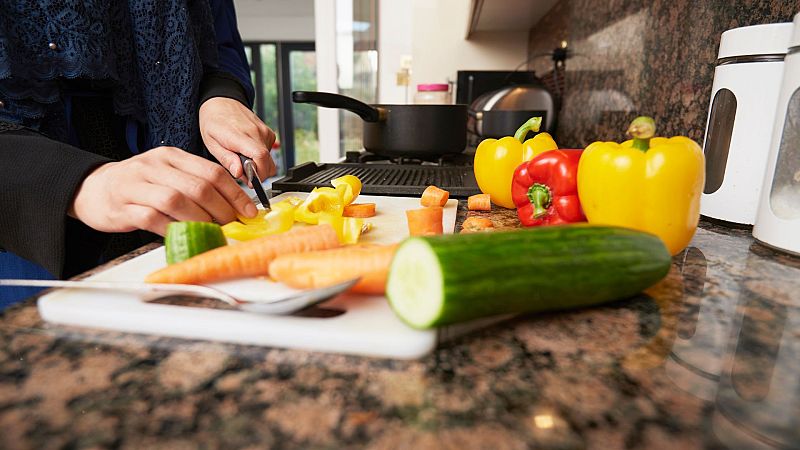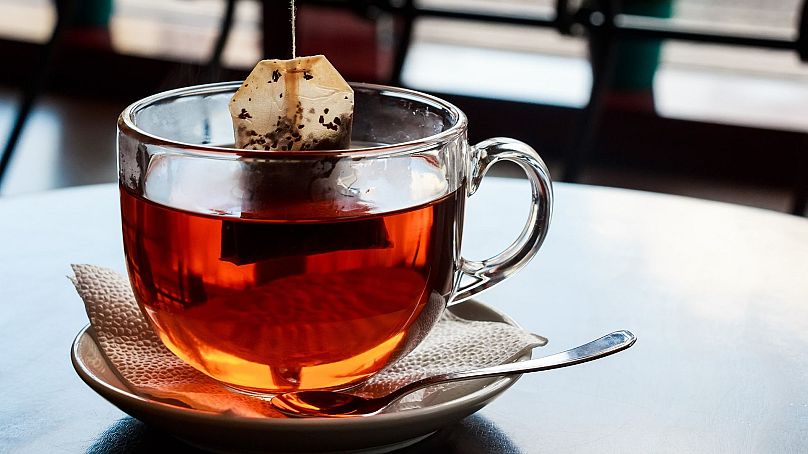These are the top 5 sources of microplastics in your home: Here's how to avoid them

Microplastics have spread so widely that they're difficult to track.
These tiny particles originate from larger plastics breaking down and are linked to heart attacks, fertility issues and cancer. Recent research also suggests they might lower sperm count.
According to a 2019 Canadian study, humans consume up to 52,000 microplastic particles per year.
Last month, interest in microplastics surged, with searches reaching a record-high Google Trends score of 100, according to German environmental organisation CleanHub.
A study from the University of New Mexico sparked global interest, with many seeking information on how microplastics enter the body and ways to reduce or remove them.
While these particles are pervasive in the environment, there are numerous sources contributing to their presence and alternatives to help avoid them - starting in your kitchen.
Top 5 products to avoid to reduce microplastic exposure and how to replace them
5. Plastic chopping boards could transfer microplastics to food
Chopping boards alone could expose humans to up to 79.4 million polypropylene microplastics - a type of plastic polymer - each year according to a study by the American Chemical Society (ACS).
This means that using a plastic chopping board could potentially increase the transfer of microplastics to food.
Tempered glass chopping boards are an affordable alternative that is easy to clean and typically free of microplastics.
Some brands also offer plastic-free chopping boards made from durable paper fibres.
4. Microwavable food containers can release microplastics when heated
Plastic products labelled as 'microwave safe' can release significant amounts of microplastics into food when heated.
A 2023 study by researchers at the University of Nebraska–Lincoln found up to 4 million microplastics per square centimetre in certain 'microwave safe' plastic-packaged baby foods.
Under the microscope, these particles were found to kill up to 75 per cent of cultured kidney cells, raising concerns about potential impacts on human health.
Another good practice is to avoid products packaged with phthalates, styrene and bisphenols, which are types of chemicals associated with various plastics, a paper from The American Academy of Pediatrics suggests.
3. How to keep microplastics out of ice cubes
Just as microplastics are found in bottled water, plastic ice cube trays could also cause contamination.
While there's less research on it, freezing plastic can cause microplastics to leach into water, similar to the process seen with heated plastics, according to an associate professor interviewed by HealthCentral.
In recent years, a more sustainable option has become popular: stainless steel ice cube trays. These not only enhance the aesthetic of drinks but get colder faster, meaning they freeze more quickly.
Similarly, silicone ice cube trays are promoted as a sustainable alternative that many consider healthier and easier for creating ice.
2. Why paper cups aren’t actually a sustainable choice
While paper cups are supposed to be more environmentally friendly, they surprisingly contribute to plastic pollution. These cups require a layer of sealant, typically consisting of up to 10 per cent high-density polyethylene (HDPE), to prevent liquid leakage.
Recycling paper cups is problematic due to the need for separating the HDPE layer from the paper, which complicates the process.
But that is not all. Using paper cups for hot drinks can lead to the release of various chemicals, as highlighted by a 2021 study published in the Journal of Hazardous Materials, including fluoride, chloride, sulfate and nitrate.
Choosing a reusable stainless steel flask not only benefits the environment but also reduces exposure to microplastics.
1. Tea bags could introduce microplastics to your morning brew
Surprisingly, many tea bags are made with unsustainable polypropylene plastic, and even paper tea bags can contain traces of plastic in the sealant.
This often means they are not biodegradable and they contribute to microplastic contamination.
In 2023, research published by the Dow University of Health Sciences raised concerns about how hot water used to brew tea can release millions of microplastics from these bags, revealing that a single cup of tea could contain up to 3.1 billion nanoplastics due to the tea bag.
Tea bags may contain other harmful substances, including fluorine compounds, arsenic, radium salts, aluminium, copper, lead, mercury, cadmium, barium and nitrates.
Fortunately, loose tea leaves are regaining popularity, and there are numerous sustainable alternatives for brewing tea, such as using a cast-iron teapot or a metal strainer.
The Plastic Pollution Coalition even recommends using cotton tea bags or straining tea through organic linen.
With these small adjustments, your kitchen can be less at risk of microplastic contamination, as explored further in CleanHub's article.


